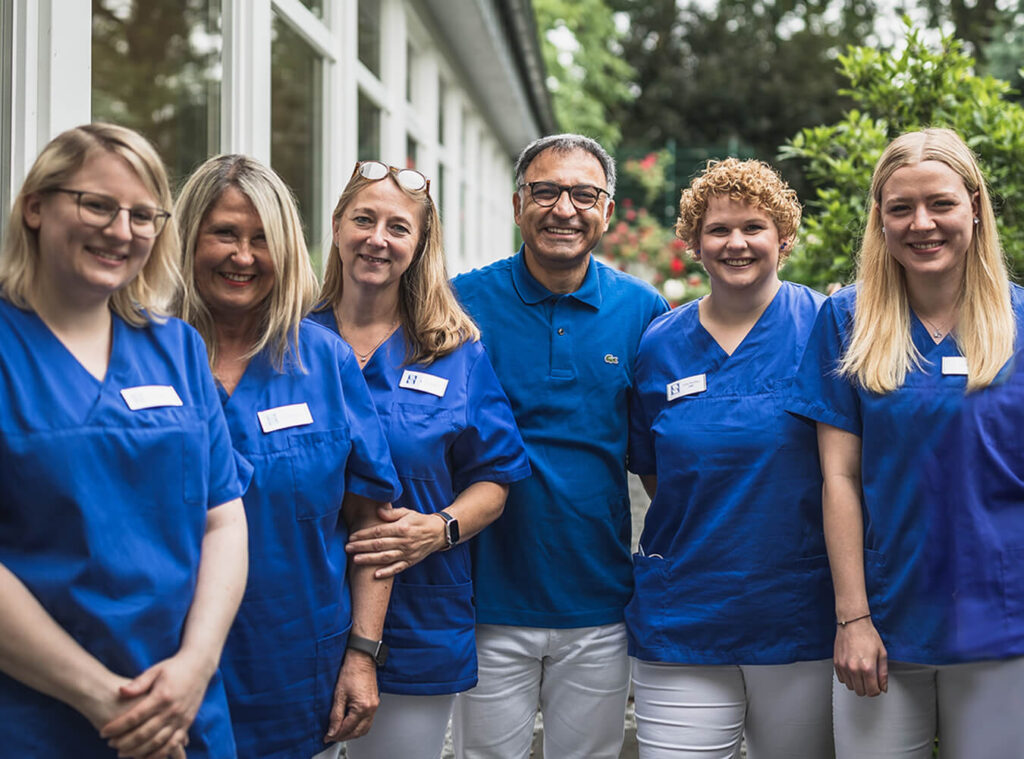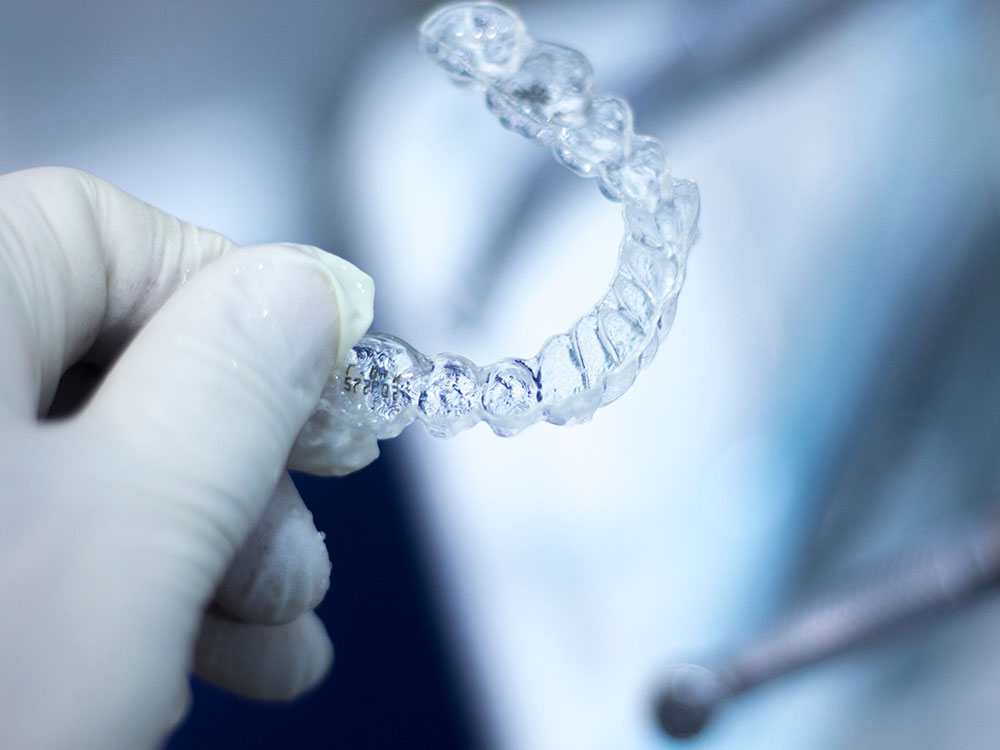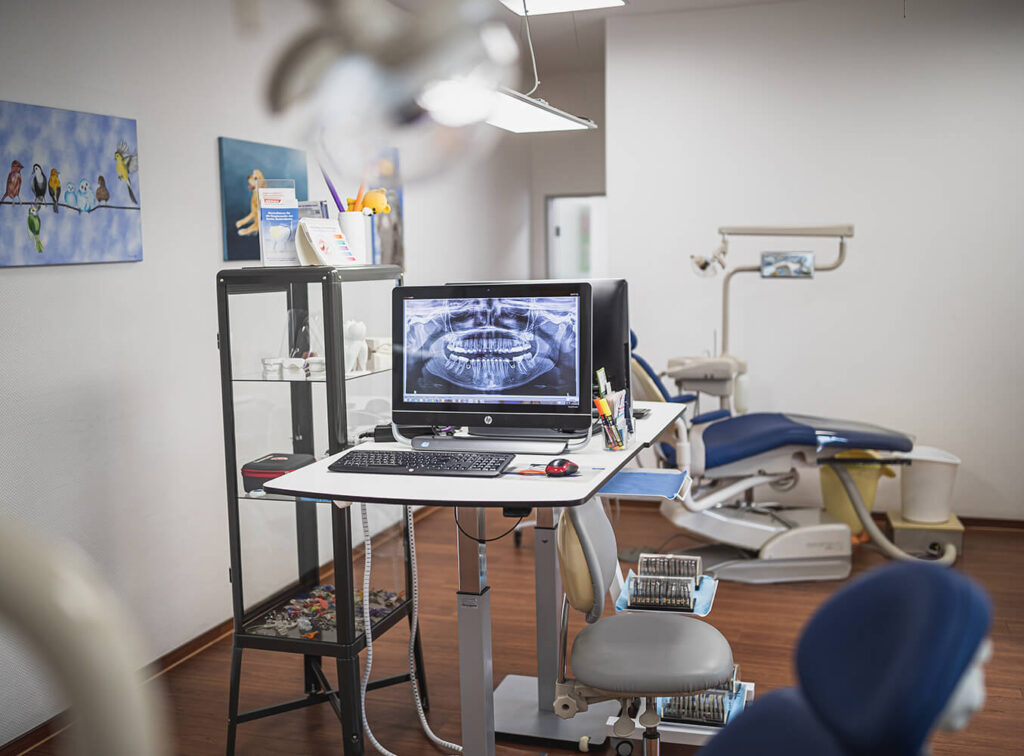Welcome to the specialist practice for
Orthodontics by Dr Mehdi Elahi
We warmly welcome you to the website of our specialist orthodontic practice in Mönchengladbach from Dr med. Dent. Mehdi Elahi.
Our aim is to maintain the health of the masticatory system (teeth, jaw joints, chewing muscles ...) in the long term and to optimise the aesthetics of the smile and the tooth-lip relationship.
It is our vocation to solve even difficult tasks quickly, comfortably and precisely. We use the most modern and at the same time valued high-tech methods to treat jaw and tooth misalignments painlessly, to a high standard and individually.
Are you looking for a specialised dental practice where you will receive personal and competent care? Make an appointment with us. You are welcome to use our Online tool.
Dr med. dent. Mehdi Elahi
Since 1998, Dr Mehdi Elahi, specialist dentist for orthodontics, has stood for modern and inconspicuous procedures for the correction of misaligned teeth and jaws.

Our team
Our competent practice team has years of experience in the field of orthodontics.

Our spectrum
In our specialist practice, you can expect modern treatments according to the latest standards.

Our practice
Modern and comfortable rooms with a friendly atmosphere await you in our practice.
Our services at a glance
Benefit from our wide range of services
Correction of misaligned teeth
Correction of jaw misalignments
Treatment of adolescents and adults
Innovative treatment methods such as aligners
Removable and invisible braces
Please contact us if you have any questions!
FAQ on orthodontics
Answers to frequently asked questions
Both a dentist and an orthodontist have studied dentistry. However, they differ in their specialisation.
The dentist looks after the health of the teeth, gums and mouth or oral mucosa, treats dental diseases such as caries and periodontitis, inserts fillings or provides dentures.
An orthodontist is also a dentist who specialises in orthodontics and therefore deals intensively with the topic of misaligned teeth/jaws.
If the teeth are not positioned correctly or the upper and lower jaws do not fit together correctly, this is either due to congenital or acquired malocclusions, which are often caused by excessive/frequent dummy or thumb sucking and poor care of the milk teeth. In many cases, it is a combination of different anomalies.
Tooth misalignments can be very diverse and can affect just one or several teeth or even the entire dental arch. Typical tooth misalignments are
- Tooth rotation and tilting
- Crowding of the teeth
- Buccal and lingual stand
- Crossbite
- Non-occlusion or scissor bite
- Protrusion
- Retrusion
- Supraposition
- Infraposition
Misaligned teeth are often the cause:
- an increased risk of dental diseases such as caries and periodontitis, as the interdental spaces can no longer be cleaned properly.
- Pronunciation disorders/lisping, e.g. when certain sounds cannot be formed correctly in the mouth.
- Digestive problems, as in some cases the food cannot be broken down properly.
- Pain in the postural apparatus due to unpleasant tension in the jaw, cervical spine, neck and back.
- Problems throughout the body.
If "only" malocclusions are present, these can be treated more easily and quickly than malocclusions where the bite also needs to be corrected. During the various treatment phases, the patient can positively influence the duration of treatment by co-operating well. An experienced orthodontist can provide you with a rough timetable during the initial consultation and examination.
Whether you need loose, removable or fixed braces depends on the type and severity of your tooth and/or jaw misalignment.
There are various braces to correct different tooth misalignments. We use x-rays, models, other documents and a comprehensive examination to find the right solution for your dental alignment.
If the teeth are crooked, this is generally perceived as unattractive. In addition to compromising aesthetics, misaligned teeth can cause unpleasant damage if they are not corrected.
Yes, even during the treatment phase in our practice, regular check-ups at the dentist once or twice a year are necessary. This dental prophylaxis involves the early detection of factors and diseases that can impair dental and oral health.
Many parents believe that a visit to the orthodontist only makes sense once all the permanent teeth have erupted, which is around the age of twelve.
We advise parents to come to our practice with their children in the year before they start school. If no treatment is necessary here, you should make a second appointment when the child is around nine years old.
Measures to treat misaligned teeth and jaws can be carried out at any age. The condition of the teeth and their anchorage in the bone is a prerequisite. Misalignments can be corrected if the teeth are still about halfway in the jawbone. Furthermore, the surrounding tissue must be free of inflammation.
If treatment is not carried out until adulthood, the growth of the jaw can no longer be taken into account in the treatment, which tends to make the correction of malocclusions more protracted.
The major difference between adult and paediatric orthodontics is that the growth of the jaw can also be utilised in young patients. If jaw misalignments exist, they often have to be corrected surgically in adults. Children tend to manage without surgery.
Orthodontics can also be used in adults to support preparation for dentures.
Unfortunately, braces cannot be used on adults with inflammatory diseases of the periodontium. Smokers are also considered "problematic patients", as they have a higher risk of bone loss and gum inflammation.
Aligners are (almost) invisible, removable braces. We use them to correct misaligned teeth in adolescents and adults. Aligners are barely noticeable in everyday life and are also extremely flexible to use.